How To Use Social Media To Grow Your Affiliate Business
-

Jesse is a Native Montanan and the co-founder and CEO of Geniuslink - or, as he likes to say, head cheerleader. Before Jesse co-founded Geniuslink, he was a whitewater rafting guide, worked at a sushi restaurant, a skate/snowboard shop, was a professional student, and then became the first Global Manager at Apple for the iTunes Affiliate Program.
- August 17, 2023
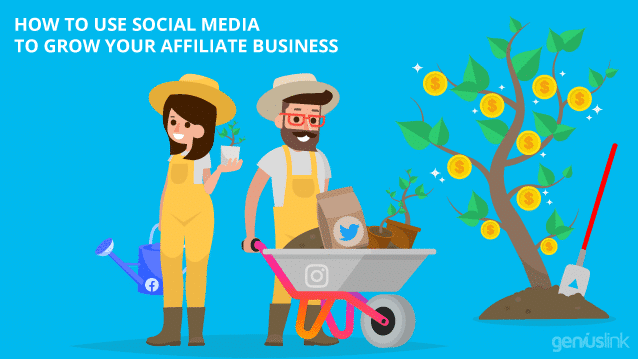
It’s no secret Social Media can be extremely helpful for Affiliate Marketers.
However, with the age of The Social Media influencer upon us, it can be intimidating trying to figure out how to post. Especially if you have a Niche that is not so mainstream, it can be difficult to master social media affiliate marketing.

My name is Teresa, I am the Marketing Coordinator here at Geniuslink, I run all of our Social Media operations. Social media affiliate marketing can vary in difficulty depending on your niche, but when used correctly it can be an awesome funnel for sales and for engaging with your target audience.
When I first started at Geniuslink, promoting smart links seemed incredibly difficult to do in a social media sense- heck explaining them at first was hard! But social media management is not an art, but a practice.
Social Media Affiliate Marketing 101
The most important thing to think about with any marketing decision is your audience.
Where is your audience most likely to engage with you? This changes from niche to niche, so before pouring too much time into your social strategy, make sure to get to know where your audience would even look for you.
A lot of the time, if you choose a social media that fits your strengths, and you find it interesting, your audience will be there. That’s your community! It will also be easier to engage is you genuinely want to.
For example, we are predominantly on Twitter, because it is easy to interact with creators. We keep tabs on Tubebuddy, Jeven Dovey, Justin Khanna, and many more of our clients making it easier to generate content.
That being said, social media affiliate marketing is awesome because you can organically reach tons of people if it is done right. In this blog, I’ll go through what I consider to be “the big 3” Social Media platforms, Twitter, Instagram, and Facebook.
We will go over how to use them, what they are typically used for, and people who have that media down. Hopefully, by the end of this blog, you will feel more comfortable with each social media and be able to identify which is right for you to focus on.
Let’s get started!
Twitter continually surprises me with the number of affiliates, creators, and businesses it houses. Twitter is a microblogging platform, and as we know blogging is an awesome way to make affiliate revenue. But you shouldn’t treat your Twitter like a traditional blog.
Key Things to Look out for on Your Twitter
1. Make your profile beautiful.
By the very nature of Twitter, you have to be a little witty, also every time you Tweet if someone hovers over your profile picture, your whole profile shows. Nothing can pour cold water all over a good Tweet than if a sketchy looking profile Tweeted it.
Start right now by changing your bio, from what I have seen, the best bios are as follows:
“Profession, why people should trust what you tweet, something funny/witty/personal.”
For example:
Teresa Zortman
“Lover of coffee and connections, Marketing Coordinator @geniuslink, Weaknesses: gluten.”
Then link your channel and/or website (make sure you enter your url into the url space so people can click on it.)
Tyler Miller (@tylermillertv) has a similar form that I tend to like, just for example:
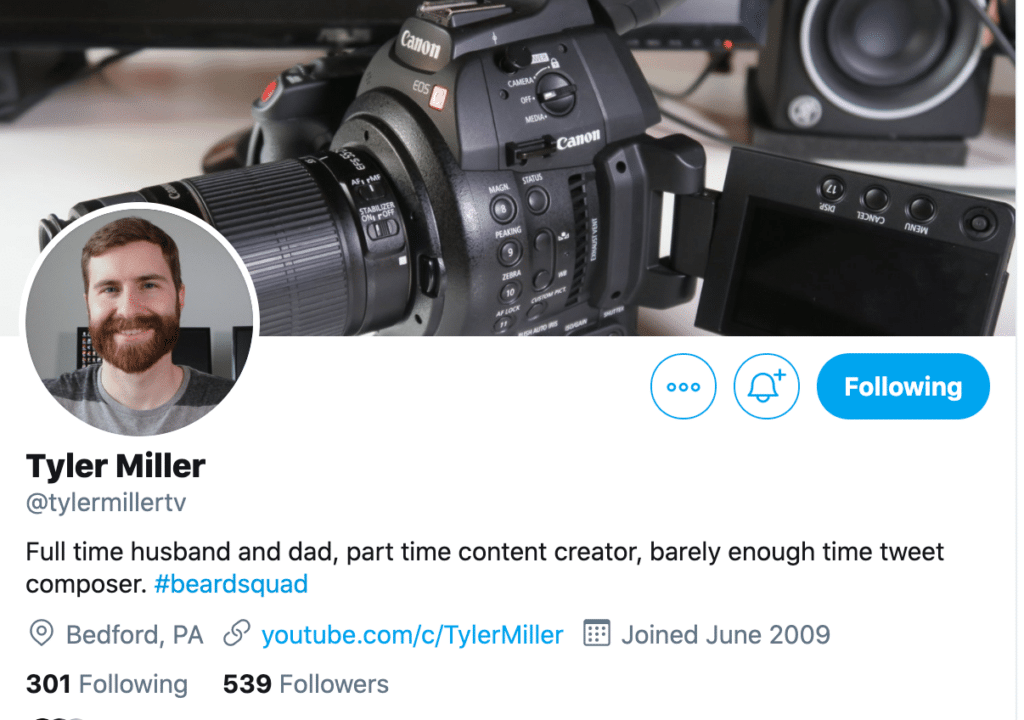
You can get a good idea of his content and humor just from one line, that’s what a bio is for.
After writing a stellar bio, make sure you have a crisp and clean profile picture. On Twitter, I think a personality picture is better than a headshot- so long as it’s clean, and flows well with your header.
Really, any size photo will work for your profile picture, as long as it will look good in the circular frame and not get cut off. Your header photo is a little more persnickety. A good size is 1500×500 px, and make sure it compliments your profile picture.
Finally, to prime your profile for social media affiliate marketing, make sure you clean up your Twitter Handle. By doing this, you can make your Twitter account an experience for your niche by having consistent branding throughout the entire profile.
Chris Brockhurst is a great example of doing what you can when the handle you want is taken- he even made it part of his brand.
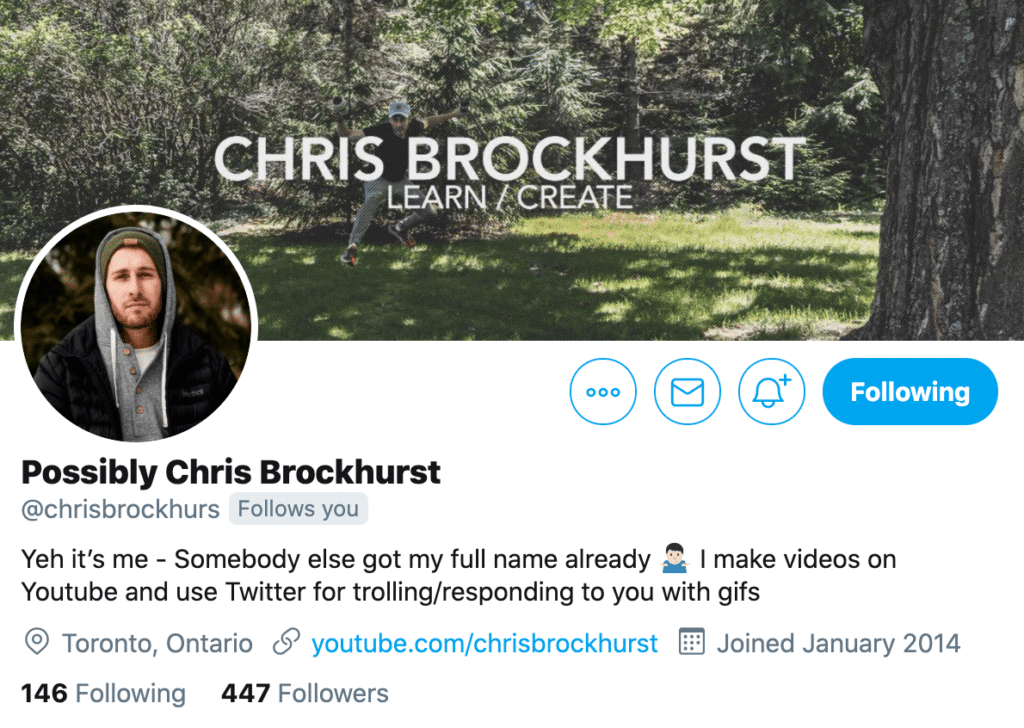
2. Make sure you post different types of media.
Even though Twitter is known for its 140 character limit, you can get around that through pictures and videos. Additionally, diversifying your tweets can help your tweets to stand out in your follower’s newsfeed allowing you to engage with your audience more.
If you’re a creator on Youtube, sharing your video links on Twitter can help drive people to your Youtube as well. Something super popular right now is going live on youtube and promoting that link on Twitter for the time leading up to the live broadcast. Twitter will even make a window of your YouTube Live so people can watch it from the app.
A good example is Penguin Random House, they made this promo video for their YouTube Live to break up their audiences feed and get them to RSVP for Their virtual book event.
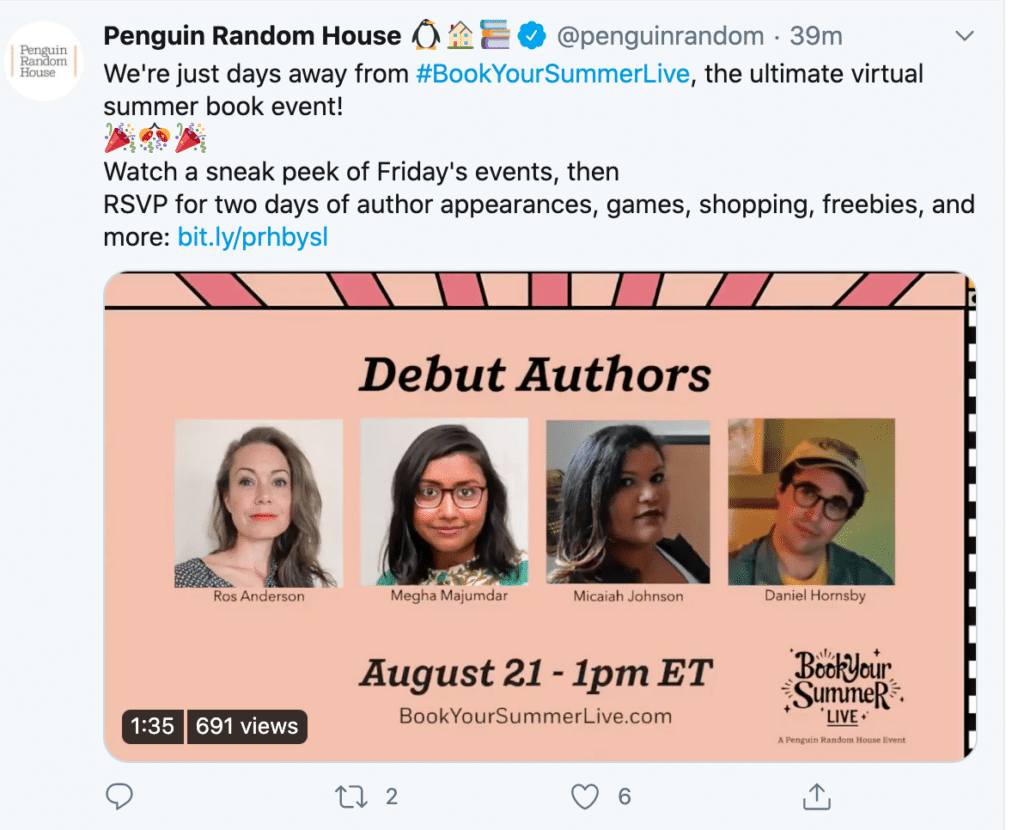
However, just like with anything, going live will lose it’s excitement if overdone- so watch out for that!
Pictures and Graphics from a blog can also catch attention and drive people to the link. I think this is because people don’t care about a link to your blog post until it solves a problem for them. Having a graphic or picture increases the likelihood of people registering that your link might be exactly what they have been looking for.
3. Follow Relevant People
I think it is evident that social media affiliate marketing is a constant learning experience, so help yourself out! There are so many insightful people you can fill your feed with, and by retweeting trustworthy profiles, and participating in threads with them, you can gain more authority in your niche as well.
How-to posts are always awesome, and asking questions to your audience usually gets some good responses, this will make people feel more personally connected to you.
Following lots of people is okay when you’re getting started, just make sure the feed you produce is curated and right for your audience. To read more about getting your Twitter on point, check out Cloudways guide here.
What is Twitter Used For Primarily in the Affiliate Space?
Where I see the most potential on Twitter is thought leadership and blog promotion.
Thought leaders are the informed opinion leaders in their field, they are trusted sources who move and inspire people with innovative ideas; turn ideas into reality, and know and show how to replicate their success. Think of your Niche, are you a travel blogger? Coffee? Food? Do you have a lot of experience in your field and for that people trust you? You could be a thought leader for that Niche!
Twitter is an amazing place to test claims, and spark discussion.
Additionally, Twitter has become a great hub to share blogs. I like to model after Brian Dean when Tweeting about our blogs.
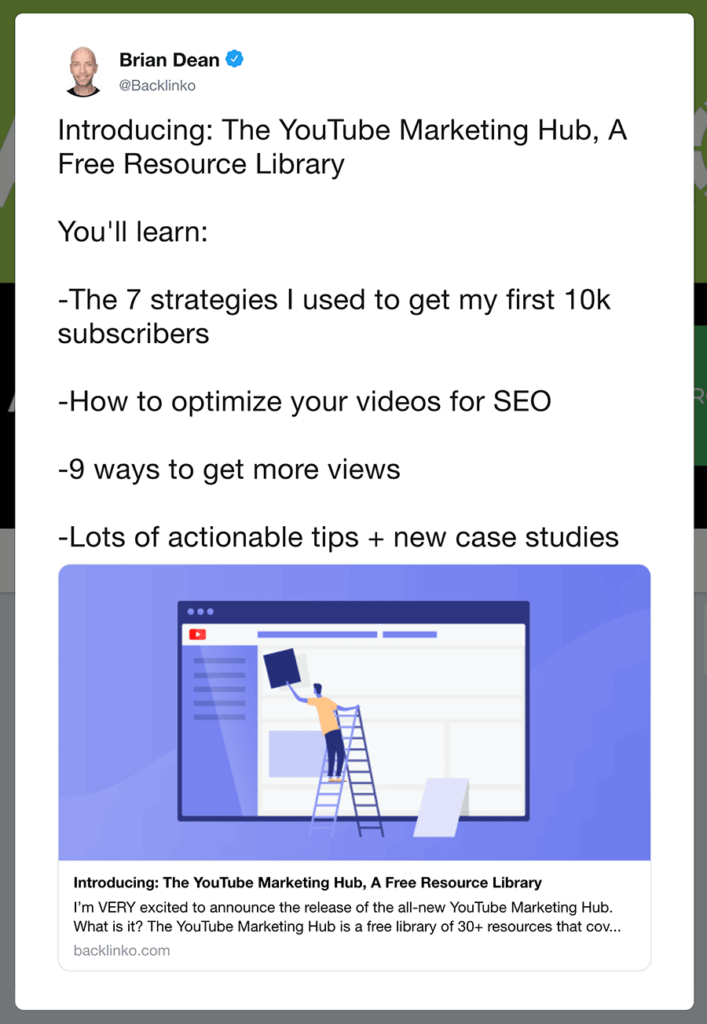
See how he lists out the highlights of the blog? This allows your Tweet to stand out in a busy Twitter feed. Driving traffic to your blog should be a goal of yours when sharing it, but sometimes that highlighted list is all some users need to know before retweeting it. This gets you and your blog more exposure.
People To Learn From
Obviously Brian Dean is a great person to watch on Twitter, especially if you are a blogger. But if you’re a creator another great person to watch is Roberto Blake.
Roberto Blake (@Robertoblake) is a business coach and an excellent example of thought leadership in that field.
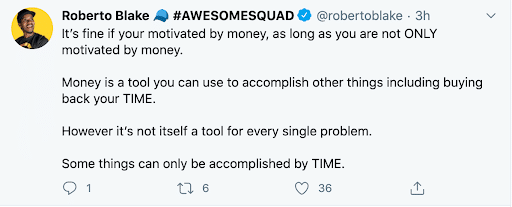
You can find him encouraging, engaging, and making statements through his Twitter, and this has paid off in subscribers to his Youtube Channel. It obviously takes time to get to that point, but the theory behind management stay the same.
Instagram is one of the most popular social media platforms time and time again. With the reputation for housing influencers and Instagram models, at times it can appear intimidating.
However, Instagram can be highly lucrative when it comes to social media affiliate marketing. The most important thing to remember is that the Instagram algorithm favors relationships and interests over anything else when deciding what posts to put in a feed. Meaning that you don’t have to have a ton of followers to get on people’s feeds.
Additionally, with the release of Instagram Reels, the explore page is becoming more relied on for content from Instagram users. This is where knowing your audience will come in handy, because Instagram will put your content in front of the right people, you just have to let Instagram know who that audience is.
Key Things To Look Out For On Your Instagram
1. Your Instagram Handle
Your Instagram handle is one of those details that may not seem important, but can make or break with how much people trust you. Not only do people not want to see @user565723, but also from a branding perspective, you want it to be easy for people to recognize your handle is you when you are tagged in different posts.
DO NOT:

DO:

Keeping the same Handle as your Twitter is oftentimes a good idea for consistency.
2. Profile Picture
This can vary from account to account, if you are a business obviously use your logo here. But if you are a creator or on your own, you want to still make sure people trust your Instagram.
You would not believe the amount of Twitter and Instagram accounts I run across with a bad profile picture/ no profile picture at all! Immediately it makes me question their legitimacy and not want to tag them in company posts.
Don’t be afraid to have a picture of you and a fun activity you enjoy, or a general personality pic, just make it quality.
A good size for your Instagram profile picture is 110×100, and it is going in a circular frame so choose a photo that you are in the center of so you do not get cropped out.
Someone who does a great job of encompassing his personality in his profile picture and Handle is Jeremy Fragrance. His profile picture is of great quality and his handle makes him easy to find.

3. Geotagging and Hashtags
As I mentioned before, the Instagram algorithm prioritizes relationships and interests, but sometimes it needs a little help in finding your audience. Geotagging can show your relationship with someone by being in their local area, or being somewhere someone wants to travel.
SuperSaf does a great job of this, see his location underneath his username? By doing this he makes his pictures more relevant to those in the UK, or who are interested in the UK.
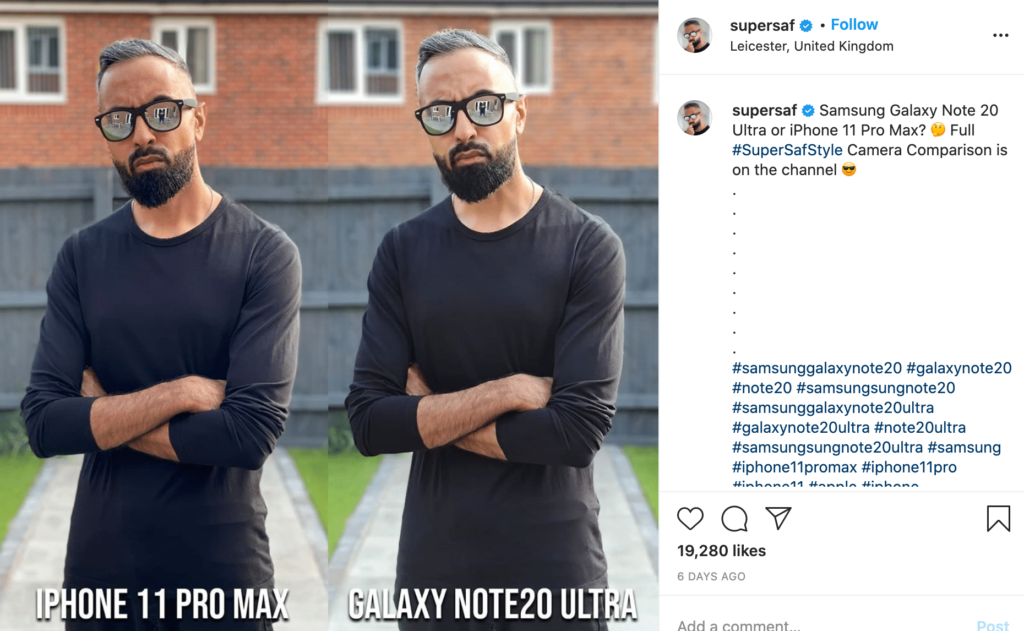
For example, I follow both my local brewery and Lizzo on my personal Instagram. Even though Lizzo posts more often and has way more likes/ followers, I see my local brewery more because we are in the same location (and I love their beer).
Hashtags help Instagram identify interests, and people can follow hashtags to see posts within them. This is why spamming hashtags isn’t a good idea (#likeforlike #like #followme) it’s important to have hashtags that fit your niche and that bring the right people to your profile.
Again look at Supersaf’s post, all of his hashtags are relevant to his post and what people may be searching for.
4. Going Live
The fact that viewers can interact with you while you’re live on camera to answer questions and discuss topics helps you to build a community.
Especially in the socially distanced culture of COVID, Instagram live can be crucial for giving people community when everyone seems so far.
To go live successfully, you have to make sure you have a crowd. So the first step is getting the word out. Instagram stories are excellent for this because they are easily sharable and can be posted frequently without annoying your audience. They’re also a great way to get audience suggestions, take a poll to get an idea of what your audience wants to see. You can find more guidance and ideas for going live here.
5. Use Instagram Stories
Instagram not only lets you post pictures to your timeline, but also to your story. Instagram stories are great for sharing things that might not warrant a whole post but you would still like to share with your audience.
What I think is useful about stories to affiliate marketers, is you can imbed your Amazon Affiliate link in your story, so people can “swipe up” to shop for it. It’s pretty common to see businesses advertising on Instagram with this feature- but it’s open for affiliate marketers too!
You can also save stories to your account, what I have been seeing influencers do is have a separate “links” story on their profile, so their affiliate links are always at the ready.
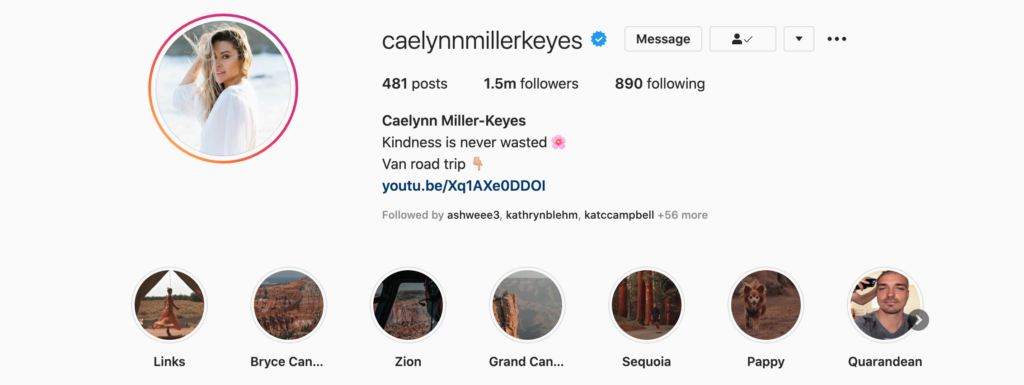
Caelynn Miller-Keyes is a great example of doing this with her stories.
6. Bonus: having a cohesive theme
If you are just beginning on Instagram, make sure to get your profile squared away before worrying about this part. But, if you are looking for a way to elevate your Instagram, theming your feed can definitely do that.
Look at @artofvisuals feed, for example:
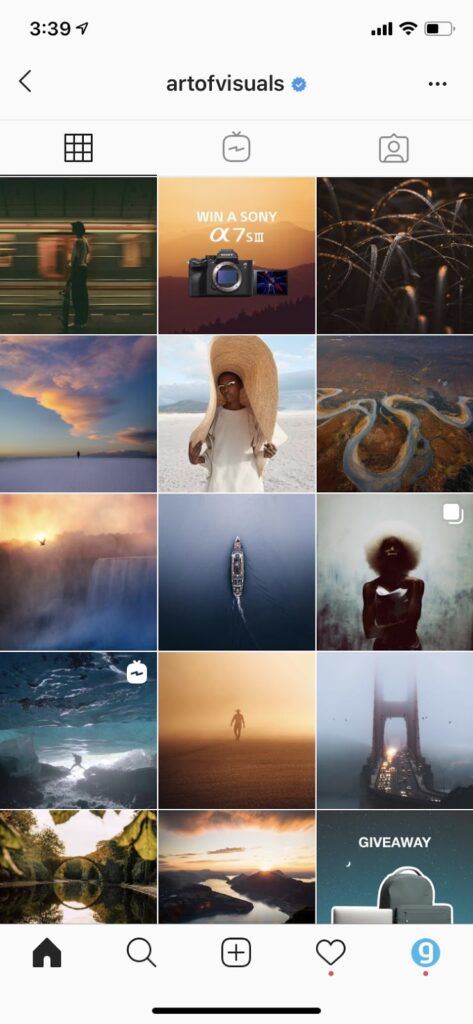
Notice how when you look at their pictures there is an obvious blue and gold theme? This aesthetic takes time and patience, so I would only recommend it if Instagram is your main platform- but man, does it look amazing!
If the affiliate links you share are based on aesthetics at all, what better way to show that people can trust your taste than having a beautiful feed? This is a great way to show your aesthetic and attract followers.
Utilizing Your Instagram For Affiliation
Being an affiliate on Instagram is tough because links only work within your bio, or on stories. For this reason, I would look at Instagram as more of a branding tool, and a great promotion tool for YouTubers.
You can still promote links on Instagram, but your bio is the only place they are clickable. For that reason, I think it’s best to have a landing page with your links or a link straight to your youtube instead. Posting videos that preview your Youtube to hook an audience, going live, and posting pictures of your setup are great for letting your audience feel ‘behind the scenes.’
Jeven Dovey does a great job of this, his pictures are usually behind the scenes, or announcing new videos, which he keeps updated in his bio.

People to Watch on Instagram
As mentioned before, Jeremy Fragrance is awesome about his Instagram management. A great example of someone who manages their aesthetic like a pro is Art Of Visuals. You definitely don’t need to be a photographer to have a successful Instagram presence- just attention to detail.
Facebook is a social media that has stood the test of time. It has made itself not only a social hub but a business hub as well for social media affiliate marketing. Facebooks algorithm seems to prefer more genuine posts, likely deriving from the fact that it is a social business network.
With about 1.63 billion daily users and 2.45 billion monthly active users, Facebook is the biggest hub for posting affiliate marketing links. It is a unique platform because not only can you run your profile, but you can start a group for your niche. However, the drawback is that since Facebook is so prevalent for paid advertising, it can be difficult to break through the noise for your own promotions.
Key Things to Have Down On Facebook
1. Create a Group
There is so much value in having a Facebook group for your niche. Not only can you promote your content, but people who follow you can feel like they have found their community. If you and your brand appear to be at the lead of that community- that’s powerful.
One of my favorite Seth Godin quotes is “people like us, do things like this.”
Don’t only use your Facebook group to define what you think that is for your niche, but listen and watch for what your niche anchors itself on. This can be helpful for you to make the right content for your audience.
2. Engage with Fans
You want your fans to trust the products you recommend, so establishing yourself as an authority in your niche is very important. If all you are posting is advertisements, then it makes it harder to believe your good intentions. Additionally, engaging with your audience can flush out their needs and help you post more relevant links- increasing your commissions.
Use the 80/20 rule, 80% of your posts are educational or entertaining and 20% of your posts are promotional. Strategically using content to engage your audience in this way is paramount.
Fun Content to try:
- quizzes
- discussion threads
- memes
- gifs/pictures
- polls
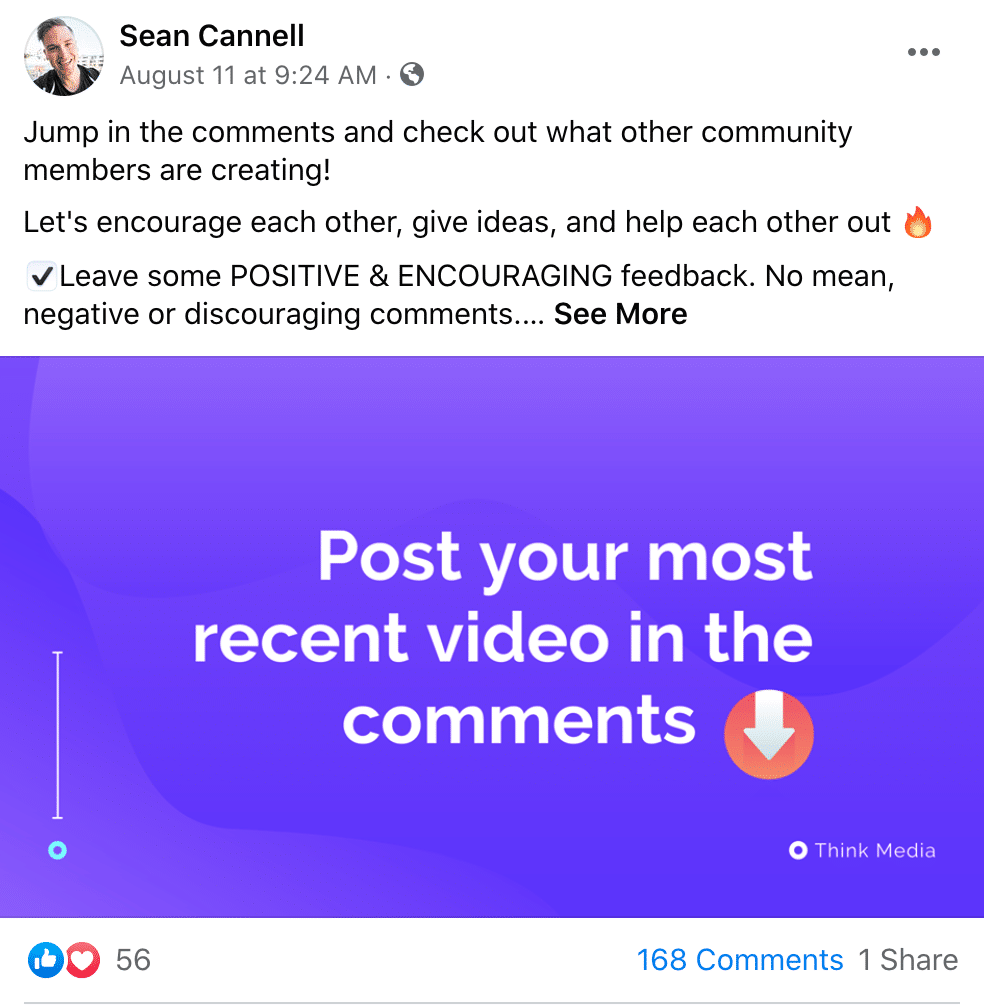
Discussion threads like these are great for “blowing up” a post and ultimately bringing new people back to the Facebook page.
Educational Content:
- blog post
- “how to” post
- video lesson
3. Speaking of blog content, drive people to your blog!
Take what you know about your niche and put it in a blog! If you are a backpacker, make a blog about a common problem your audience is having, and link your affiliate links there. You can do affiliate links in an actual post as well, but make sure you are not overdoing it.
Your blogs can be a big value and give you more authority to recommend products to your group. Just always be thinking about your audience.
People To Watch
Sean Cannell is definitely someone to model after for Facebook. He regularly promotes videos with pictures and promotes discussion via his descriptions.
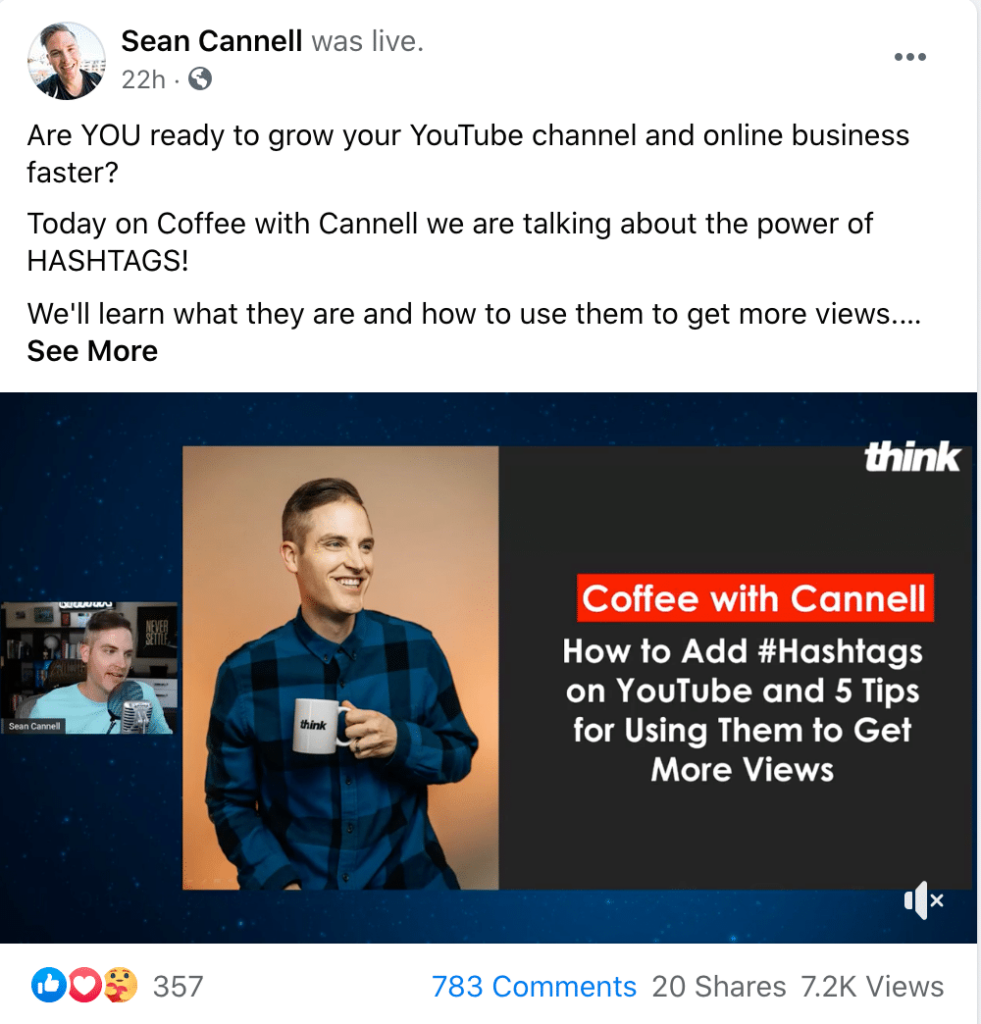
He also has a private group, so he can engage with his fans on marketing topics.

Conclusion
Social media affiliate marketing is a great way to organically gain traffic and increase your authority in your niche. At the same time, make sure that you still have fun with it and it sounds like you because that is what makes your brand!
It is important to note, sometimes your posts are going to flop- especially in the beginning. THAT’S OKAY! I have had plenty of blog posts, Twitter posts, Instagram posts, and Facebook posts completely flop, but that is what I mean when I say social media is a practice- not an art. Improvise, adapt, overcome!
I hope that I was able to point you in the right direction with your social media marketing efforts, and if you have any extra questions, feel free to ask them in the comments!
Author
-

Jesse is a Native Montanan and the co-founder and CEO of Geniuslink - or, as he likes to say, head cheerleader. Before Jesse co-founded Geniuslink, he was a whitewater rafting guide, worked at a sushi restaurant, a skate/snowboard shop, was a professional student, and then became the first Global Manager at Apple for the iTunes Affiliate Program.
Author
-

Jesse is a Native Montanan and the co-founder and CEO of Geniuslink - or, as he likes to say, head cheerleader. Before Jesse co-founded Geniuslink, he was a whitewater rafting guide, worked at a sushi restaurant, a skate/snowboard shop, was a professional student, and then became the first Global Manager at Apple for the iTunes Affiliate Program.
More revenue from every link you share
Geniuslink makes localizing, tracking, and managing smart links dead simple, so you can earn more without added work.